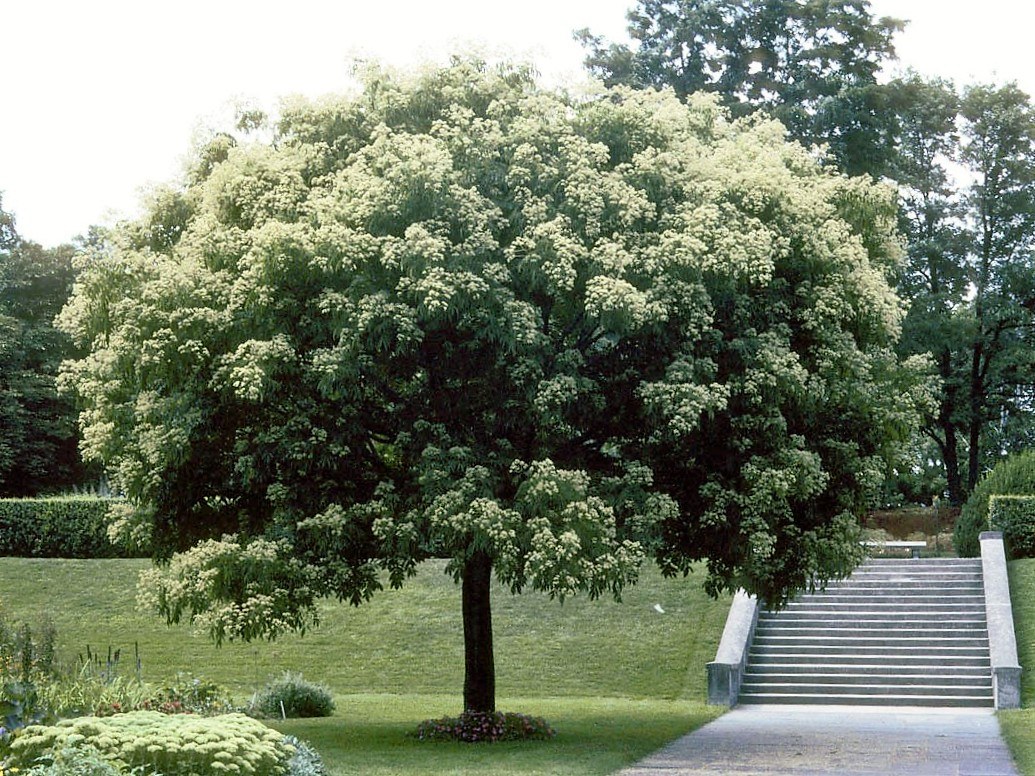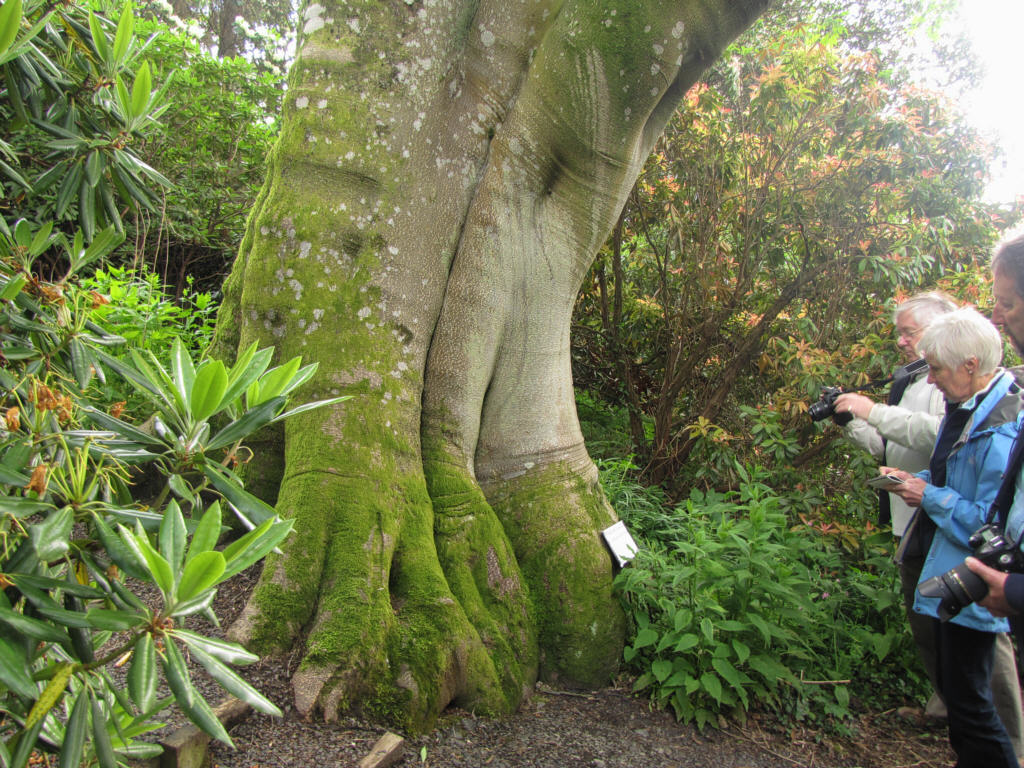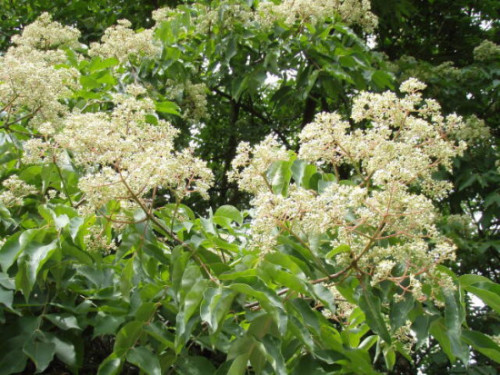Euodia-Daniellii (Tetradium Danielii)
Euodia Daniellii is a late-flowering, fast-growing tree that is loved by bees. The performance exceeds all known melliferous plants. It blooms in late summer, when there is a shortage of other honey plants. It has a pronounced decorative effect and gas resistance, due to which it is often used in urban landscaping.
Euodia Daniellii, Tetradium Daniellii, Bee Tree, Korean Evodia, Honey Tree

Evodia, is a genus of woody plants of the Rutaceae family, whose homeland is the Far East, in particular China and the Korean Peninsula (southern part).
Depending on the region and growing conditions, it can be a tree of the first or second tier. In the Middle Strip, it can reach 10-15 meters in height. Evodia is a powerful honey plant that blooms at the end of summer and is even more valuable because of this. It blooms, just in the period in which there is a shortage of wood honey plants.

Evodia honey is very similar to Acacia (Robinia Pseudoacacia) honey, although it has a more pronounced aroma and, importantly, is hypoallergenic.
In terms of honey-bearing - there is no equal to Evodia! According to calculations, it surpasses Linden and Acacia both! In the southern regions (south of the Crimea), it can give re-flowering in October!

Evodia is a fast growing tree. She loves the sun and is not very whimsical to the soil, but prefers good moisture and drainage. Can withstand penumbra, which affects productivity. At the latitude of Kiev and to the north, young trees require shelter from frost, but become stronger over time.

The amount of nectar that Evodia secretes is highly dependent on the amount of sun, temperature, quality of care and, in particular, on soil moisture, availability of watering. In the middle lane, and in conditions of possible droughts, it is extremely necessary to organize drip irrigation.
According to the literature, one hectare of continuous plantings of Evodia, under favorable conditions, is capable of producing up to 6 tons of honey! But you must admit, even 2-3 tons at the end of the season would be great! According to the data that we have, in Europe there are no continuous, industrial plantings of Evodia yet, therefore it is not possible to verify these statements. If you have any informations about this, please inform us too.
Evodia Danielii begins to bloom earlier than Evodia Hupehensis by 2 weeks.
Flowering period duration - more than 5 weeks. At the latitude of Chisinau, Evodia Danielii usually blooms from mid-July to the end of August. Evodia begins to bloom 5-7 years after planting.
In addition to honey, Evodia has pronounced decorative properties and resistance to urban gas pollution. For these qualities and rapid growth, in Asia, it is often used in urban landscaping. The decorativeness of Euodia is expressed through the glossiness of the leaves, beautiful long flowering and bright coloring of seed boxes.



A large number of birds feed on ripened seeds, due to which, in Nature, the seeds spread.
In the context of climate change processes, Evodia is being successfully promoted by beekeepers to more and more northern latitudes. Successfully wintering and flowering specimens are known at the latitude of Kiev, Minsk, Moscow, Viena, Bratislava, not to mention the milder climate of Western Europe in Hamburg, Amsterdam, London... This breed certainly deserves the attention of beekeepers and landscape designers for further introduction.
In the Middle Strip, the seeds of Evodia very rarely sprout and seedlings. Evodia shows no signs of invasiveness.
On our site you can purchase rayonated seeds and seedlings of Evodia Danielii and Evodia Hupehensis, of different ages, exclusively with a Protected Root System. Due to the peculiarities of the root system, Evodia hardly tolerates a transplant over the age of 2 years. Therefore, we recommend growing and planting Evodia only with a Closed Root System (in containers)
To the seeds, we attach detailed instructions for germination, following which exactly, you will definitely get seedlings and plants that are resistant to the climate of the Middle Strip.


